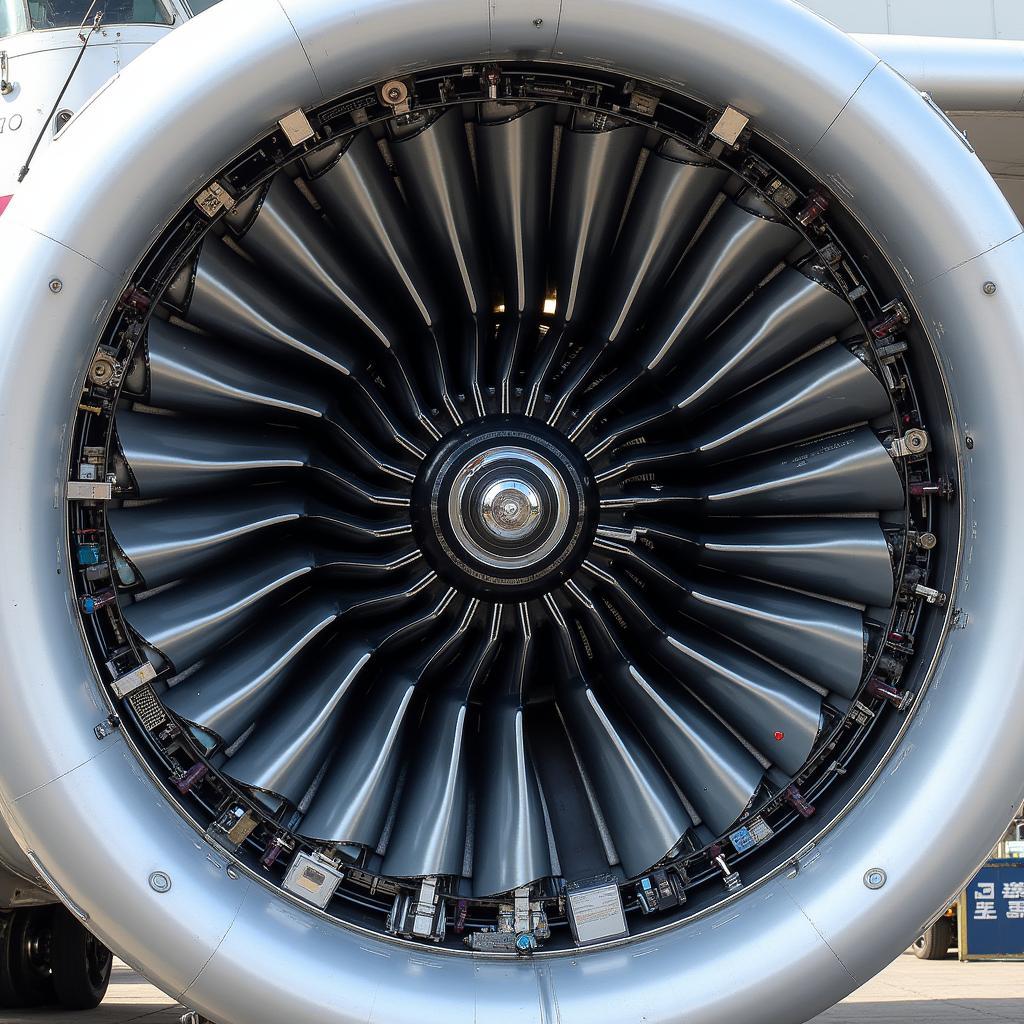An Axial Fan Performance Curve is a graphical representation of an axial fan’s performance characteristics. It illustrates the relationship between various parameters such as airflow, pressure, power consumption, efficiency, and sound level at different operating speeds. This curve is essential for selecting the right fan for a specific application, optimizing system performance, and troubleshooting potential issues.
Decoding the Axial Fan Performance Curve
The axial fan performance curve is typically plotted with airflow rate on the horizontal axis (x-axis) and static pressure on the vertical axis (y-axis). The curve itself represents the fan’s operating point at a specific speed. As airflow increases, the static pressure typically decreases, creating a curve that slopes downward from left to right.
Key Points on the Axial Fan Performance Curve
Several critical points on the curve provide valuable insights into the fan’s capabilities:
- Operating Point: This point indicates the actual airflow and pressure the fan will deliver when installed in a specific system.
- Best Efficiency Point (BEP): This point represents the operating condition where the fan operates at its highest efficiency, minimizing energy consumption.
- Shut-off Point: This point, located on the y-axis, represents the maximum static pressure the fan can generate when there is no airflow.
- Free Delivery: This point, located on the x-axis, indicates the maximum airflow the fan can deliver with no static pressure.
Factors Influencing Axial Fan Performance Curves
Several factors can impact the shape and characteristics of an axial fan performance curve:
- Fan Size and Design: Larger fans generally move more air, while fans with specific blade designs can optimize airflow or pressure depending on the application.
- Blade Angle: Steeper blade angles typically generate higher pressure, while shallower angles favor higher airflow.
- Operating Speed: Increasing the fan speed shifts the entire curve upward, indicating higher airflow and pressure capabilities.
- System Resistance: The resistance encountered by the airflow in the system, such as ductwork or filters, can significantly influence the fan’s operating point.
Applications of Axial Fan Performance Curves
Understanding and interpreting axial fan performance curves are crucial for various applications:
- System Design: Engineers use these curves to select the right fan size and type to meet specific airflow and pressure requirements.
- Performance Optimization: Analyzing the curve helps identify the best operating point for efficiency and minimize energy consumption.
- Troubleshooting: Deviations from the expected performance curve can indicate issues like fan wear, system blockages, or improper installation.
FAQs about Axial Fan Performance Curves
1. Why is my axial fan not delivering the expected airflow?
Several factors could be at play. Check the fan’s operating point on the performance curve against the system resistance. Blockages in the system, a worn-out fan, or incorrect installation can all lead to reduced airflow.
2. How do I determine the best operating speed for my axial fan?
The ideal operating speed corresponds to the Best Efficiency Point (BEP) on the performance curve. Operating the fan at this speed ensures optimal energy efficiency and minimizes operating costs.
3. Can I use an axial fan performance curve to estimate the noise level?
Yes, many performance curves also include information about the fan’s sound output (usually in decibels) at different operating points. This data can be helpful in selecting a quieter fan for noise-sensitive environments.
4. What is the significance of the shut-off point on the curve?
The shut-off point indicates the maximum pressure the fan can generate when there is no airflow. This information is crucial for applications requiring high static pressure, such as overcoming significant system resistance.
5. How does system resistance affect axial fan performance?
System resistance, such as ductwork or filters, creates a pressure drop that the fan must overcome to deliver the desired airflow. Higher system resistance forces the fan to operate at a lower airflow rate for a given pressure.
Need More Information?
For any inquiries or assistance regarding axial fan performance curves or any other fan-related questions, please don’t hesitate to reach out to us.
Contact Us:
Phone Number: 0903426737
Email: [email protected]
Address: To 9, Khu 6, Phuong Gieng Day, Thanh Pho Ha Long, Gieng Day, Ha Long, Quang Ninh, Vietnam.
We have a dedicated customer support team available 24/7 to assist you.








